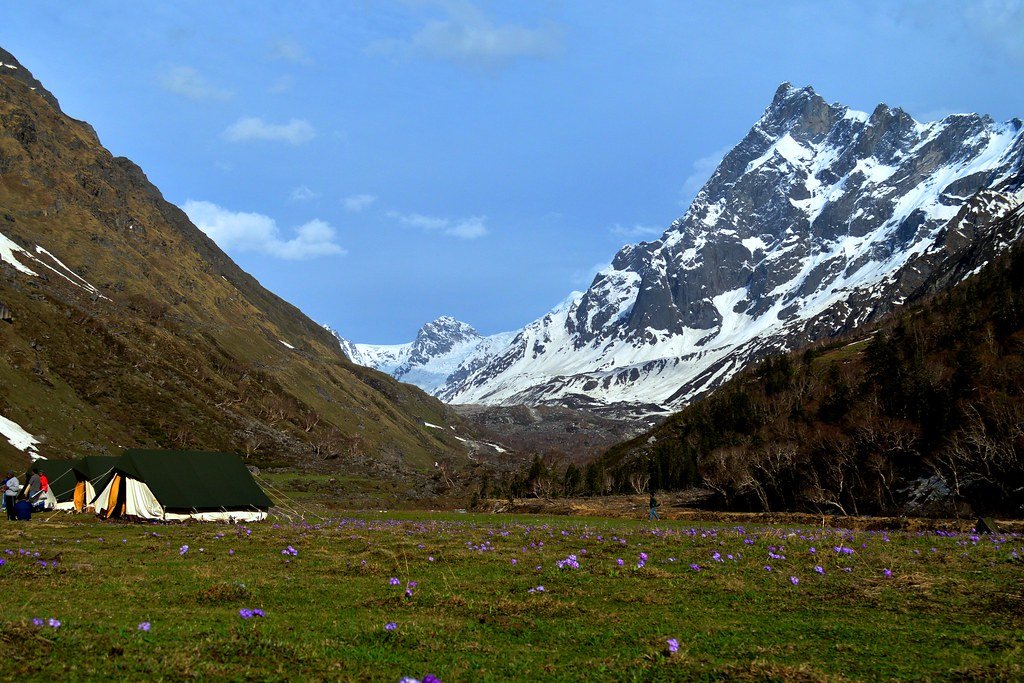Rudraprayag: Where Rivers and Mountains Embrace | 26 Places To Visit In Rudraprayag | How To Reach
Rudraprayag, a city and municipality in Uttarakhand, India, is renowned for the confluence of the Alaknanda and Mandakini rivers. This confluence is one of the Panch Prayag (five confluences) of the Alaknanda River and is a significant religious destination for Char Dham Yatra pilgrims. Visitors can explore Rudraprayag’s temples, natural beauty, and nearby attractions such as Koteshwar Mahadev, Chamunda Devi, and Kartik Swami.
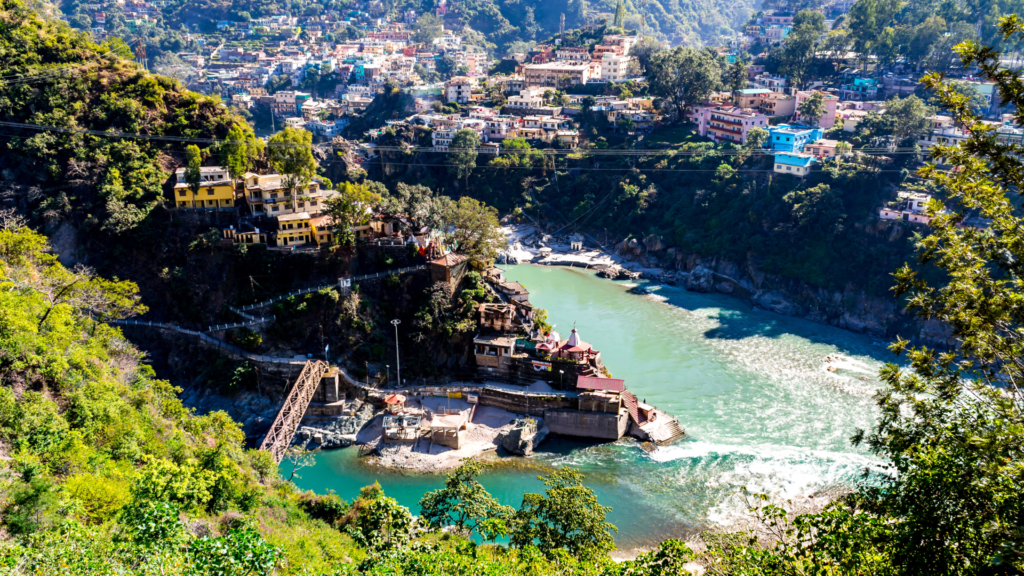
The town holds historical and mythological significance as well. Legend has it that Lord Shiva appeared here in his Rudra avatar to bless sage Narad, who sought mastery in music. The Pandavas also visited Rudraprayag to seek forgiveness from Lord Shiva after the Kurukshetra war. Additionally, Rudraprayag was once the hunting ground of the man-eating Leopard of Rudraprayag, famously killed by Jim Corbett in 1926.
Best Places To Visit In Rudraprayag:
The town is known for the Rudranath Temple, Deoria Tal, and Koteshwar Temple, offering a mix of spiritual significance and natural beauty. Augustmuni, an ancient town, provides a glimpse into the region’s rich cultural heritage. Rudraprayag is a perfect destination for those seeking spiritual solace, natural beauty, or a taste of history.
Here are some places to visit in rudraprayag:
1. Madmaheshwar Temple:
Madmaheshwar Temple, dedicated to Lord Shiva, is situated in Gaundar, a village in the Garhwal Himalayas of. This temple is a part of the Panch Kedar pilgrimage sites and is where the navel of Shiva is venerated. Believed to have been constructed by the Pandavas from the Mahabharata, the temple sits at an elevation of 3,497 meters (11,473.1 feet) and is accessible via a 22-kilometer (14-mile) trek from Ransi village. Open from May to November, the temple closes during winter due to heavy snowfall.
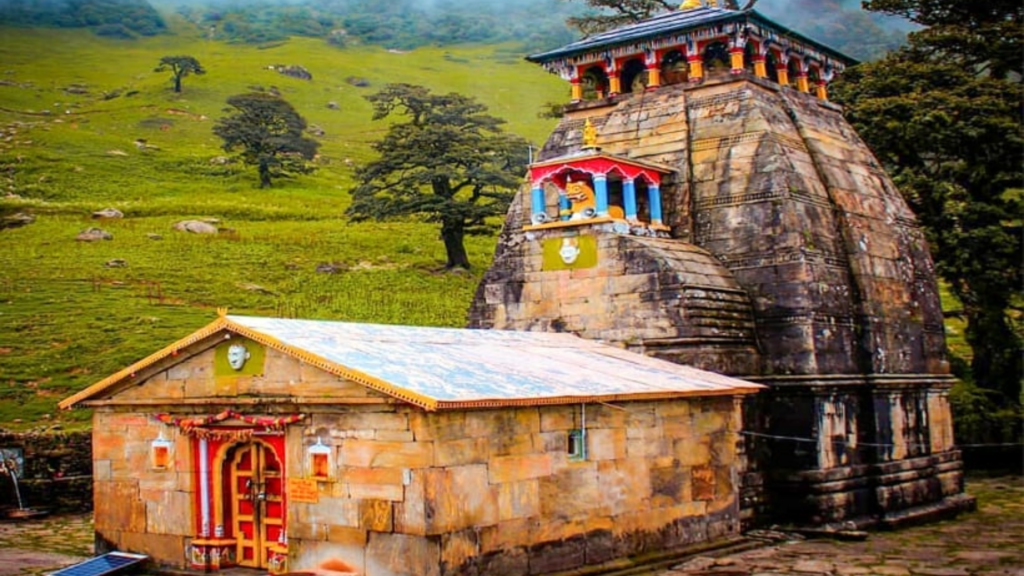
Visit Time: 6 AM to 7 PM
Aarti Timing: 6 AM and 6:30 PM
2. Koteshwar Temple:
Koteshwar Mahadev Temple in Rudraprayag is a revered Hindu temple dedicated to Lord Shiva. It is situated on the banks of the Alaknanda River, approximately 3 km from Rudraprayag’s main market. This cave temple houses a natural Shiva linga and is believed to be the site where Lord Shiva sought refuge from the demon Bhasmasura, who was later vanquished by Lord Vishnu. The temple attracts numerous devotees, especially during Mahashivaratri and the month of Saavan (July-August). Additionally, the temple complex includes a 60-bed hospital that serves the local community.
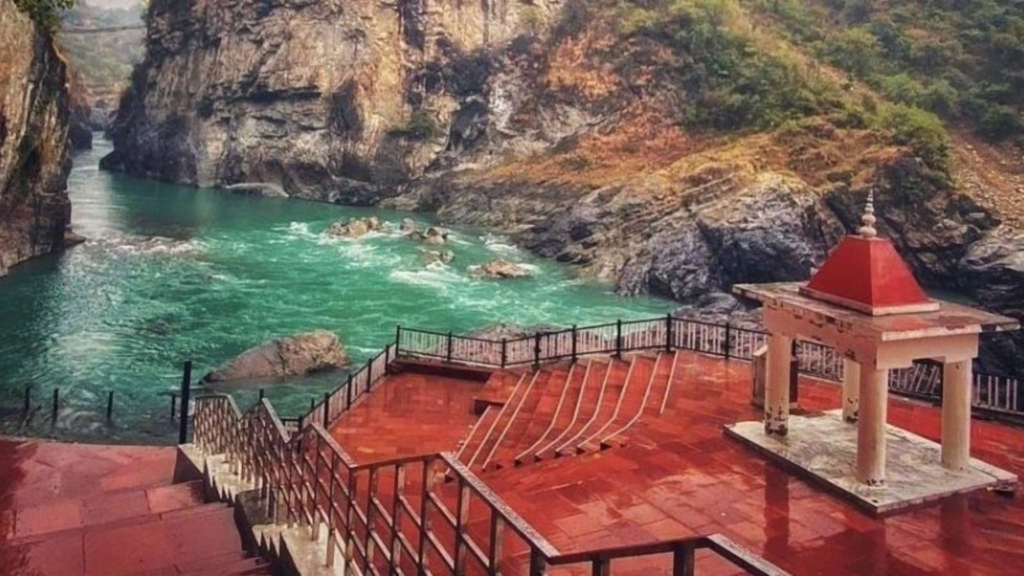
Visit Time: 6:00 AM to 7:00 PM
3. Rudranath Temple:
Rudranath Temple, nestled in the Garhwal Himalayan mountains of, is a revered Hindu temple dedicated to Lord Shiva. It holds a significant place as one of the five temples in the Panch Kedar pilgrimage circuit, where Lord Shiva’s face is venerated as Neelkantha Mahadeva. Located at an altitude of 3,600 meters (11,800 feet) above sea level, the temple is surrounded by dense forests of rhododendron and alpine meadows. Legend has it that the Pandavas, heroes of the Mahabharata, established this temple to seek Lord Shiva’s blessings after the Kurukshetra war. The trek to Rudranath temple is renowned for its challenge, involving a steep ascent and descent through rugged terrain. The temple is open for six months from May to October, closing during the winter season.
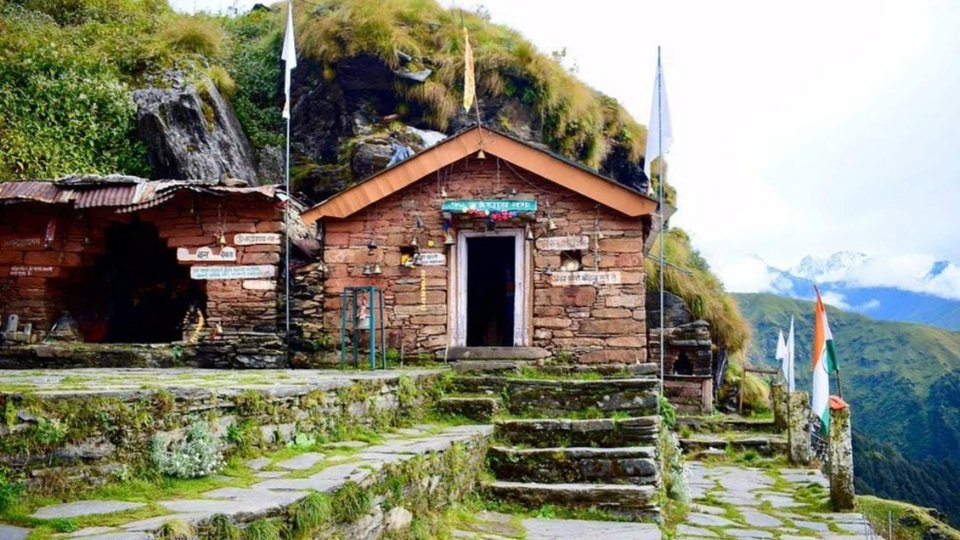
Visit Time: 6:00 AM to 6:00 PM
4. Deoria Tal:
Deoria Tal, a stunning lake nestled in the Garhwal Himalayas, is located approximately 3 km from the villages of Mastura and Sari. It is a key attraction of the Deoria Tal trek, offering breathtaking views of snow-capped peaks such as Chaukhamba, Neelkantha, and the Kedar range. Hindus consider the lake sacred, believing it to be the site where gods once bathed and where the Pandavas underwent a test by Yaksha. Surrounded by dense forests of rhododendron and oak trees, Deoria Tal is an ideal spot for camping and bird watching.The optimal time to explore Deoria Tal is from March to May and from October to November. During these months, the weather is delightful, and the lake’s waters are crystal clear.
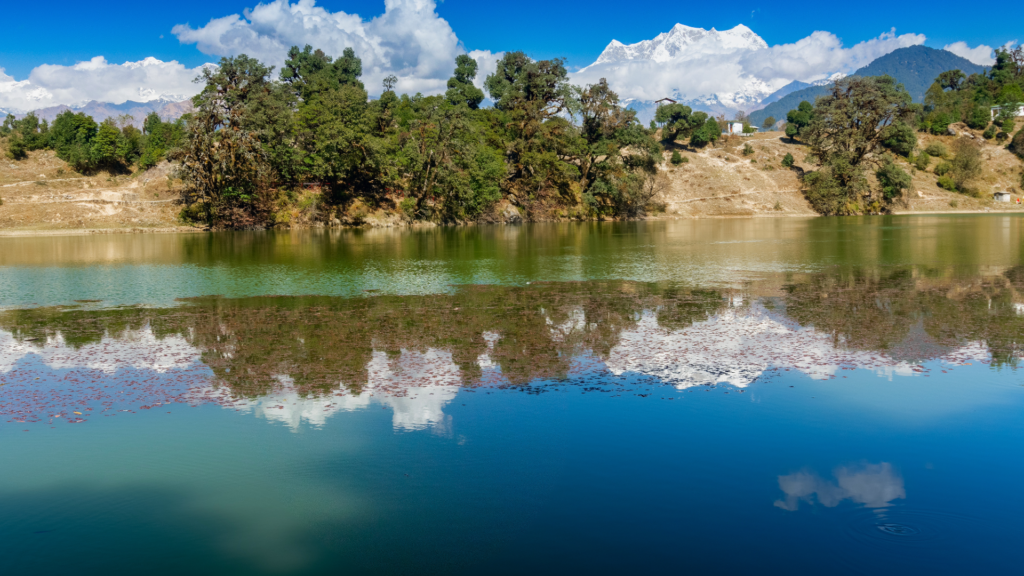
5. Chopta:
Chopta, nestled in the Rudraprayag district, is a charming hill station often referred to as the ‘Mini Switzerland of Uttarakhand’ for its picturesque meadows and verdant forests. Situated at an altitude of around 2700 meters, Chopta offers awe-inspiring vistas of the Himalayan ranges and its surroundings. This hill station is a popular destination for trekking, camping, and birdwatching. Nearby attractions include the revered Tungnath Temple, the serene Deoria Tal Lake, and the captivating Blissview. Chopta is also part of the Kedarnath Wildlife Sanctuary, housing a variety of rare and endangered flora and fauna. The best time to visit Chopta is from March to June and from September to December, when the weather is pleasant, and the views are clear.
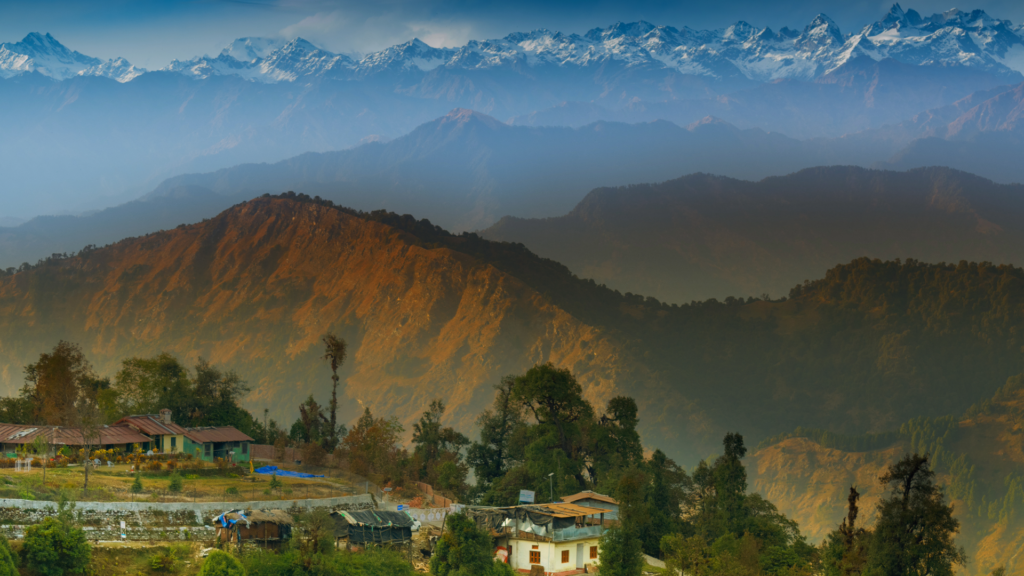
6. Ukhimath:
Ukhimath, a quaint town in the Rudraprayag district, is not only a Hindu pilgrimage site but also serves as the winter seat for the idols of the Kedarnath and Madhyamaheshwar temples. These idols are brought to Ukhimath and worshipped for six months when the higher altitudes become inaccessible due to heavy snowfall. Ukhimath boasts several ancient temples dedicated to various deities, including Usha, Shiva, Parvati, Aniruddha, and Mandhata. The town also serves as a base for trekking to nearby attractions like Deoria Tal, Chopta, and Tungnath. With its scenic beauty and spiritual significance, Ukhimath is a destination that offers both tranquility and adventure.
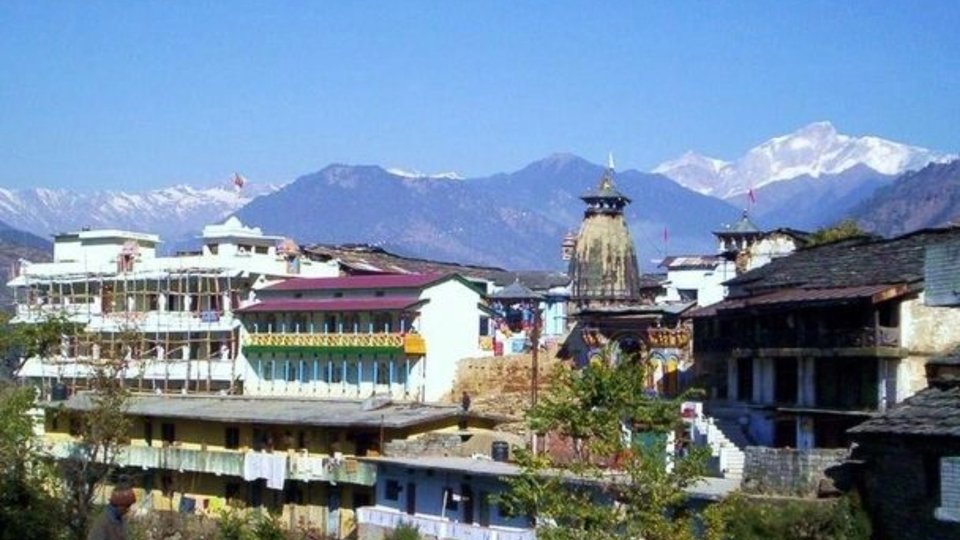
7. Triyuginarayan Temple:
Triyuginarayan Temple, nestled in the village of Triyuginarayan in the Rudraprayag district, is a revered Hindu temple dedicated to Lord Vishnu. This temple holds immense significance as the site of the divine wedding between Lord Shiva and Goddess Parvati, witnessed by Lord Vishnu and Lord Brahma. A perpetual fire burns in front of the temple, believed to have been kindled since the celestial marriage. Surrounding the temple are three sacred ponds, named after the three gods, and a spring that originates from the navel of Lord Vishnu. Triyuginarayan Temple is not only a popular pilgrimage destination but also a place of stunning natural beauty and deep spiritual significance. The best time to visit Triyuginarayan Temple is during the onset of the summer season, which falls between the months of October and March.
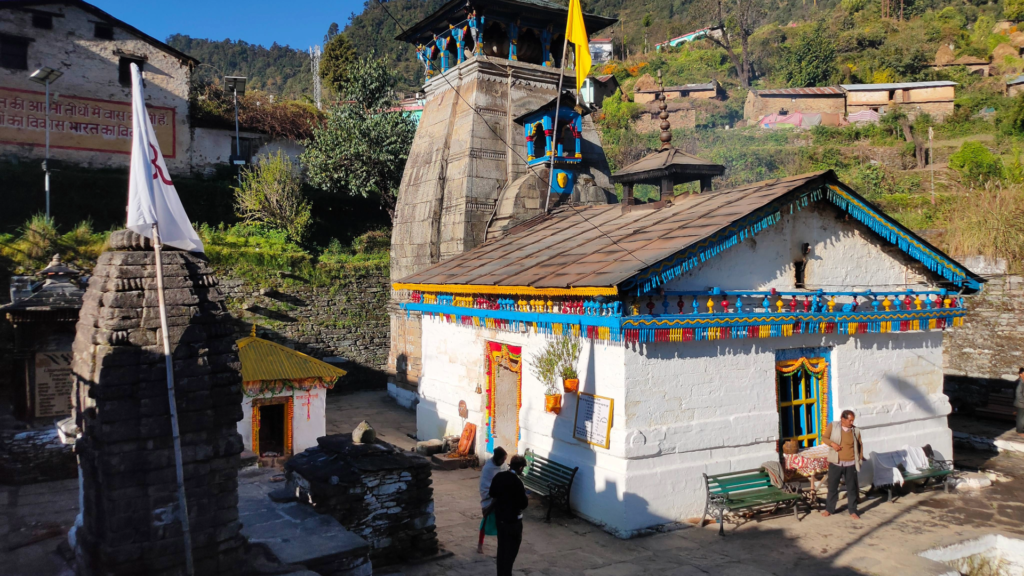
Aarti Timing: Morning aarti: 7:00 am Evening aarti: 8:00 pm
8. Omkareshwar Temple:
Omkareshwar Temple, a revered Hindu temple dedicated to Lord Shiva, is situated in Ukhimath, Rudraprayag district. This ancient temple, built in the Dharuttar Parkota style of architecture, is among the oldest temples in India. It serves as the winter abode for the deities of Kedarnath and Madmaheshwar, both important Panch Kedar shrines. The temple is steeped in legends associated with Lord Krishna, Lord Vishnu, and Emperor Mandhata. Omkareshwar Temple is a significant pilgrimage site for Lord Shiva devotees, particularly in winter when the Kedarnath and Madmaheshwar temples are inaccessible due to snowfall.
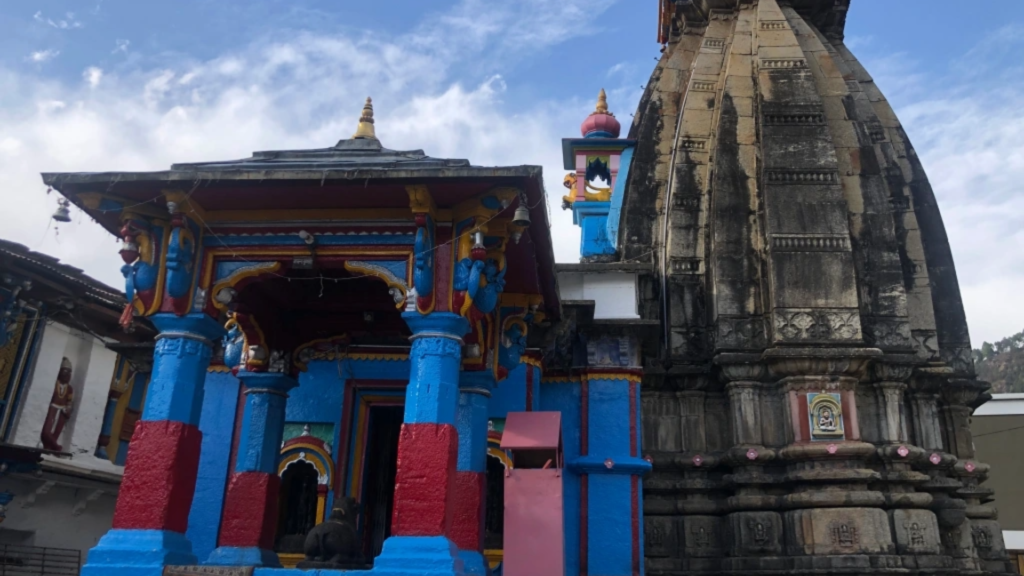
Visit Time: 5:00 AM to 3:50 PM and 4:15 PM to 9:30 PM
9. Kartik Swami Temple:
Kartik Swami Temple, dedicated to Lord Kartikeya, the son of Lord Shiva and Parvati, is located in the Rudraprayag district, at an altitude of 3,100 meters above sea level. Situated atop a hill, the temple offers breathtaking views of the Himalayan peaks, including Nanda Devi, Trishul, and Bandarpunch. To reach the temple, one must undertake a 3-km trek from Kanakchauri village, approximately 40 km from Rudraprayag. The trek winds through dense forests and vibrant rhododendron flowers, culminating in a staircase leading to the temple. The temple houses a beautifully carved idol of Kartik Swami, believed to be crafted by his father, Lord Shiva. A revered pilgrimage site for Lord Kartikeya devotees, the temple sees a surge of visitors during Kartik Purnima, typically falling between October and November. Besides its spiritual significance, the area is also ideal for trekking, camping, and birdwatching, thanks to its rich biodiversity and stunning natural beauty.
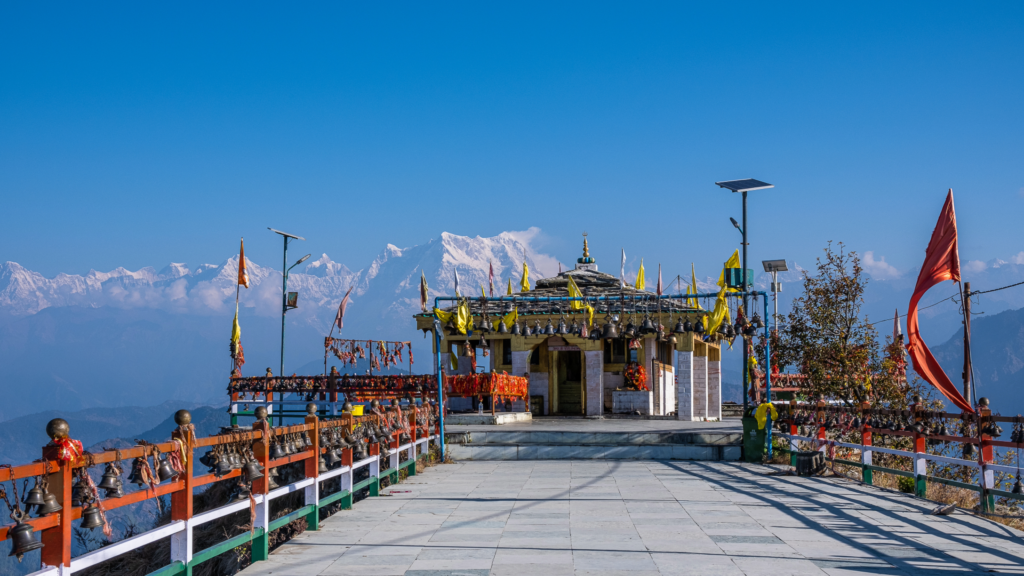
Visit Time: 6:00 am to 8:00
Aarti Timing: 6:30 pm and last approximately an hour
10. Vishwanath Temple:
The Vishwanath Temple in Guptkashi town, Rudraprayag district, is an ancient Hindu temple dedicated to Lord Shiva. It bears resemblance to the Kashi Vishwanath Temple in Varanasi and holds significant religious importance on the route to Kedarnath, one of the Chota Char Dhams and Panch Kedars. This temple showcases exquisite architecture with intricate stone carvings, a towering structure, and a slanting roof. Inside, you’ll find a small shrine dedicated to Ardhanarishvara, a depiction of the half-man, half-woman form of Shiva and Parvati, as well as a statue of Nandi, Shiva’s bull. Vishwanath Temple is where Lord Shiva proposed to Parvati and where he disguised himself as a bull to elude the Pandavas, who sought his forgiveness after the Kurukshetra war. Guptkashi’s name, meaning “hidden Kashi,” signifies its status as one of the six Kashis as sacred as the primary Kashi – Varanasi. you can travel by road from Rishikesh, which is approximately 182 km away. The nearest railway station is Rishikesh railway station, and the closest airport is Jolly Grant airport in Dehradun, about 198 km away.
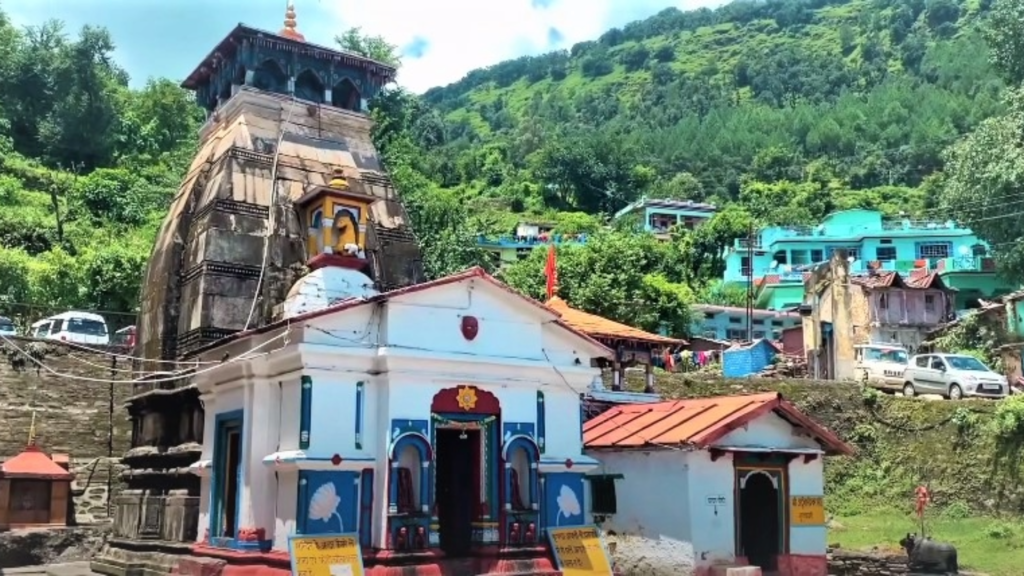
Visit Time: 6:00 AM to 9:00 PM
Aarti Time: Evening aarti at 6:30 PM
11. Bhairav Nath Temple:
The Bhairav Nath Temple in Rudraprayag, located near the Kedarnath temple, is believed to be the protector of the Kedarnath temple and the entire Kedar valley during the winter months when the temple is closed. Pilgrims visiting Kedarnath also traditionally pay their respects at the Bhairav Nath Temple. Offering a panoramic view of the Kedarnath temple and the valley, the temple is situated approximately 2 km above the Kedarnath mandir and requires a steep uphill trek to reach.
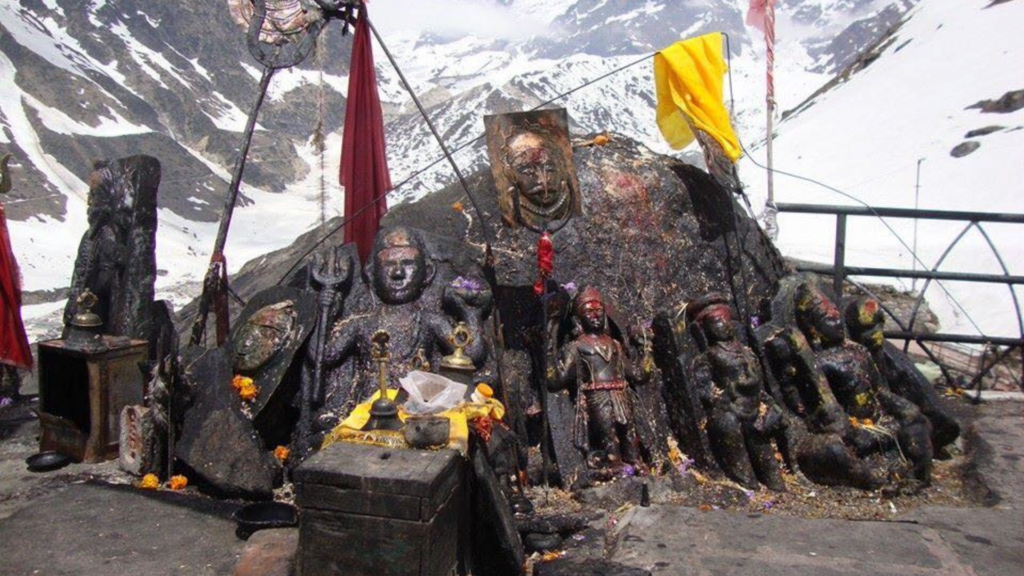
Visit Time: 6:00 AM to 9:00 PM
12. Gauri Kund:
Gauri Kund, nestled in the Rudraprayag district, is a revered lake situated on the banks of the Mandakini River at an altitude of 6,000 feet. Serving as the base camp for trekking to the Kedarnath Temple, one of the Char Dham pilgrimage sites, it holds immense religious significance. Gauri Kund is where Goddess Parvati meditated to win Lord Shiva as her husband. The lake is accompanied by an ancient temple dedicated to Gauri Mai, where devotees pay homage to Parvati. Additionally, there are two bathing pools, one with hot water and one with cold water, believed to possess healing properties.
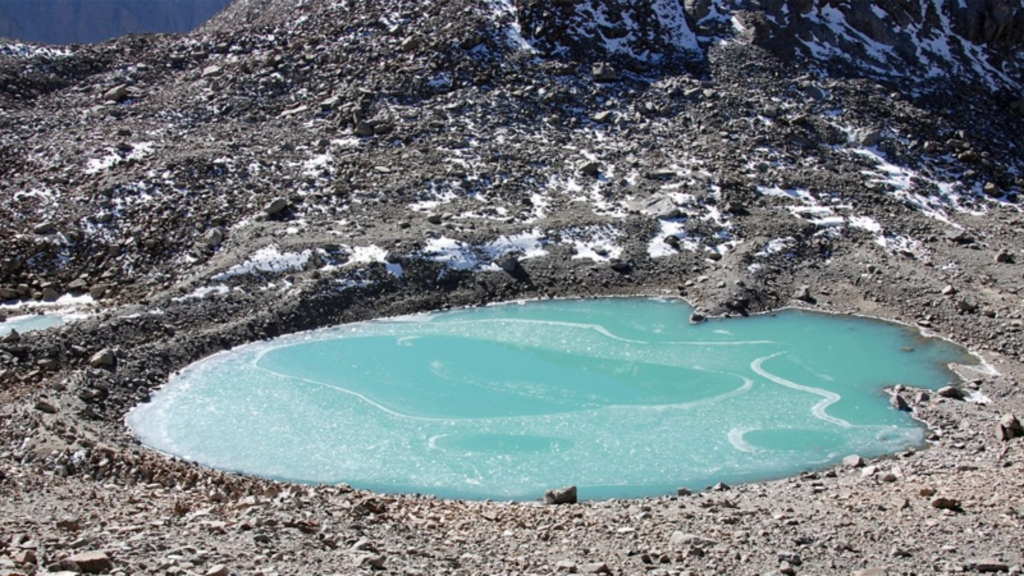
13. Vasuki Tal:
Vasuki Tal, a pristine glacial lake near Kedarnath, sits at an elevation of 4,135 meters above sea level, offering a mesmerizing sight with its clear blue waters, surrounded by snow-capped peaks and vibrant flowers. Renowned among trekkers and pilgrims, it is revered as the spot where Lord Vishnu bathed during Raksha Bandhan. Additionally, the lake serves as the source of the Vasuki Ganga river, which merges with the Mandakini river. For further details on Vasuki Tal, refer to the following web sources.
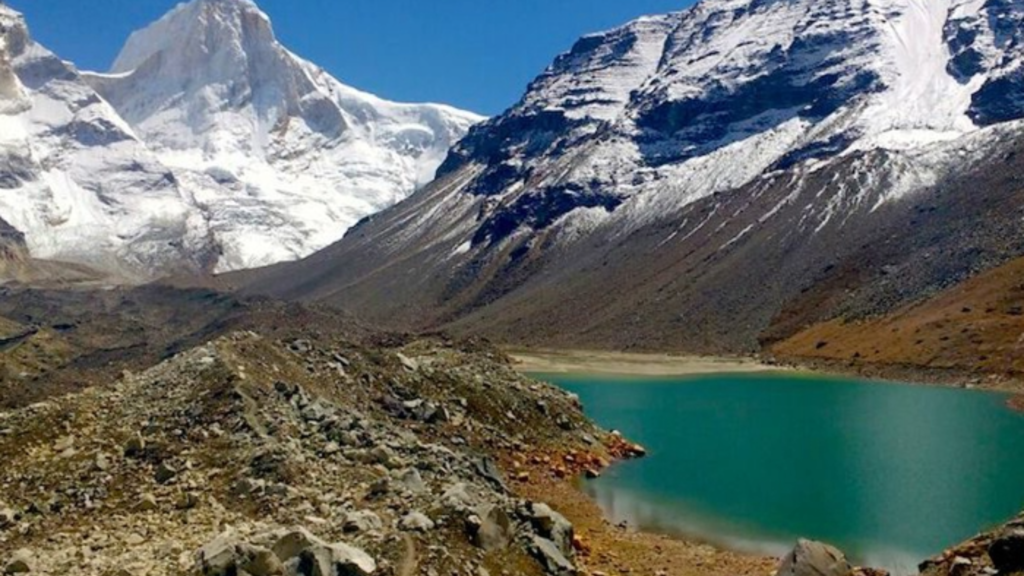
14. Shankaracharya Samadhi:
Shankaracharya Samadhi marks the site where Adi Shankara, a revered philosopher and Hindu reformer, attained moksha, or liberation. Situated behind the Kedarnath Temple in the Himalayas, a revered site of the Char Dham pilgrimage, it holds significant spiritual importance. Adi Shankara is renowned for establishing the Advaita Vedanta school of thought and revitalizing Sanatana Dharma in India. He composed numerous hymns and scriptures and left his physical form at the age of 32 in Kedarnath. As a tribute, his disciples erected a memorial near the temple to honor his legacy.
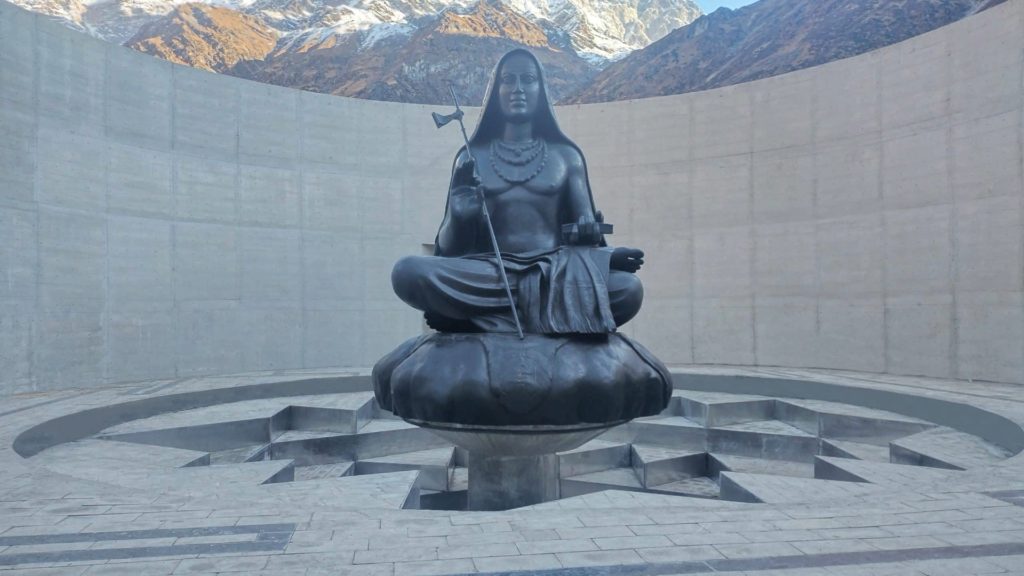
15. Hariyali Devi Temple:
Hariyali Devi Temple, dedicated to Maa Hariyali Devi, also known as Sitla Mata, Bala Devi, and Vaishno Devi, is situated in the Rudraprayag district at an altitude of 1400 meters. The temple features a striking idol of the goddess mounted on a lion, accompanied by two other deities, Kshatrapal and Heet Devi. This temple holds the status of a Siddha Peeth, signifying a place of divine power and grace. Legend has it that during Kansa’s attempt to kill Mahamaya, Devaki’s seventh child, her hand fell at this location. Mahamaya later embodied Goddess Durga. While the temple remains open year-round, it becomes particularly vibrant during Janmashtami, Rakshabandhan, Navratras, and Deepawali. During these festivals, devotees carry the idol of Maa Hariyali Devi in a palanquin to Hariyali Kantha, the main shrine located about 6-7 km away. This journey is a sacred pilgrimage, with devotees joyously singing and dancing along the way. To visit the temple, take the Nagrasu route, 18 km from Rudraprayag,
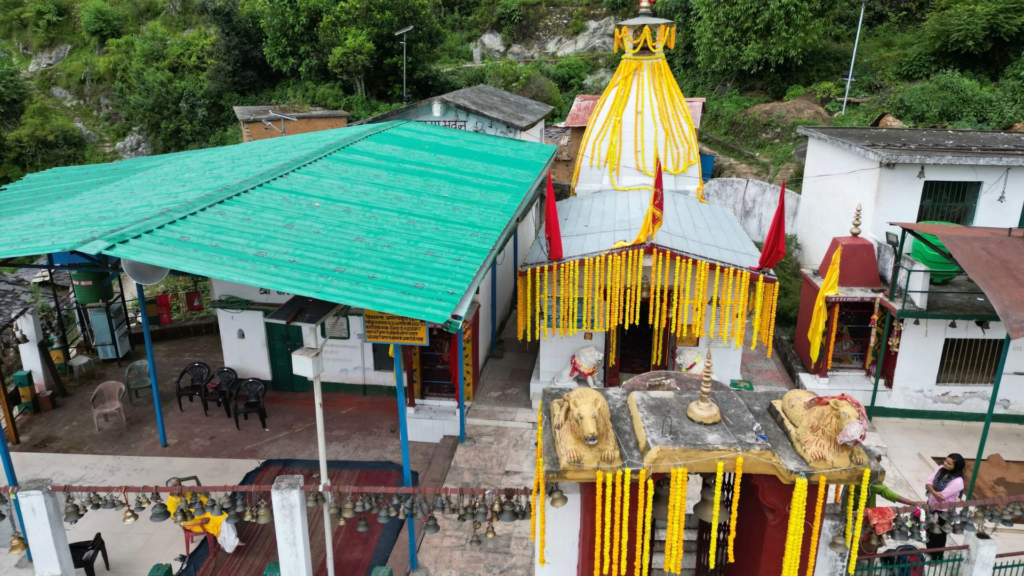
Visit Time: 6:00 AM to 7:00 PM
16. Kaalimath Temple:
Kaalimath Temple, situated in the Rudraprayag district, is a revered shrine dedicated to Goddess Kali, a form of the mother goddess. Positioned on the banks of the Saraswati River, it holds significance as one of the 108 Shakti Peeths in India, marking the spot where Goddess Sati’s body parts fell after her self-immolation. The temple is believed to be where Goddess Kali descended into the earth after defeating the demon Rakthabeej. Once a year during the Navratri festival, the temple’s silver plate covering the spot of her disappearance is opened. Surrounded by the majestic peaks of the Kedarnath range, the temple provides a serene and divine atmosphere for devotees. To reach Kalimath Temple, one can travel by road from Ukhimath or Guptkashi, both approximately 20 km away. The nearest railway station is in Rishikesh, while the closest airport is Jolly Grant in Dehradun.
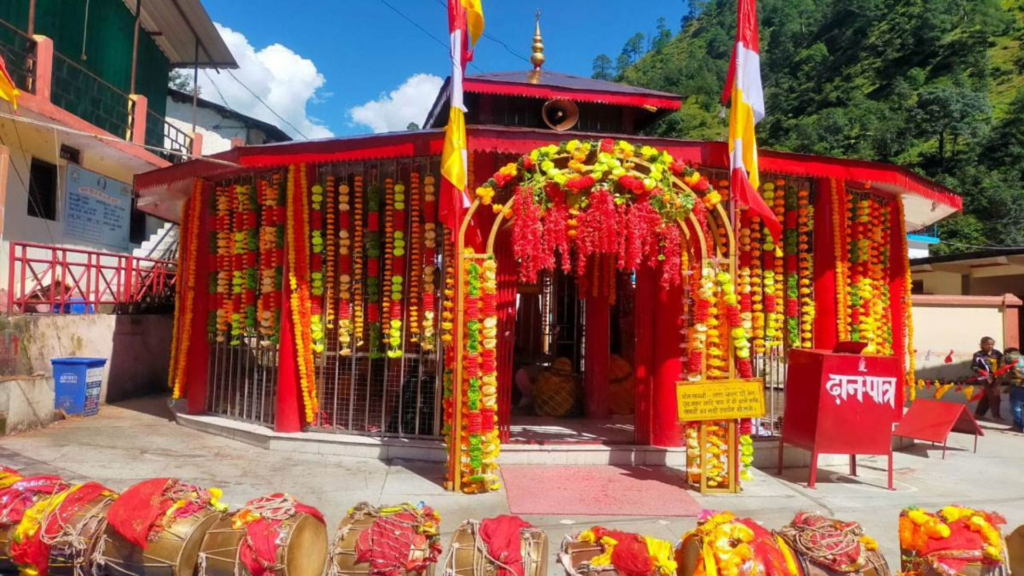
Visit Time: 6 am to 8 pm
17. Kanchula Korak Musk Deer Sanctuary:
Kanchula Korak Musk Deer Sanctuary, located in Rudraprayag, Uttarakhand, is a haven for wildlife enthusiasts and nature lovers. Sprawling over an area of approximately 5 square kilometers, this sanctuary is named after the musk deer, a rare and endangered species found in the region. The sanctuary is also home to various other wildlife species, including Himalayan black bears, leopards, and a variety of bird species, making it a paradise for birdwatchers. The lush greenery, breathtaking landscapes, and tranquil environment of Kanchula Korak Musk Deer Sanctuary offer a perfect retreat for those seeking solace in nature.
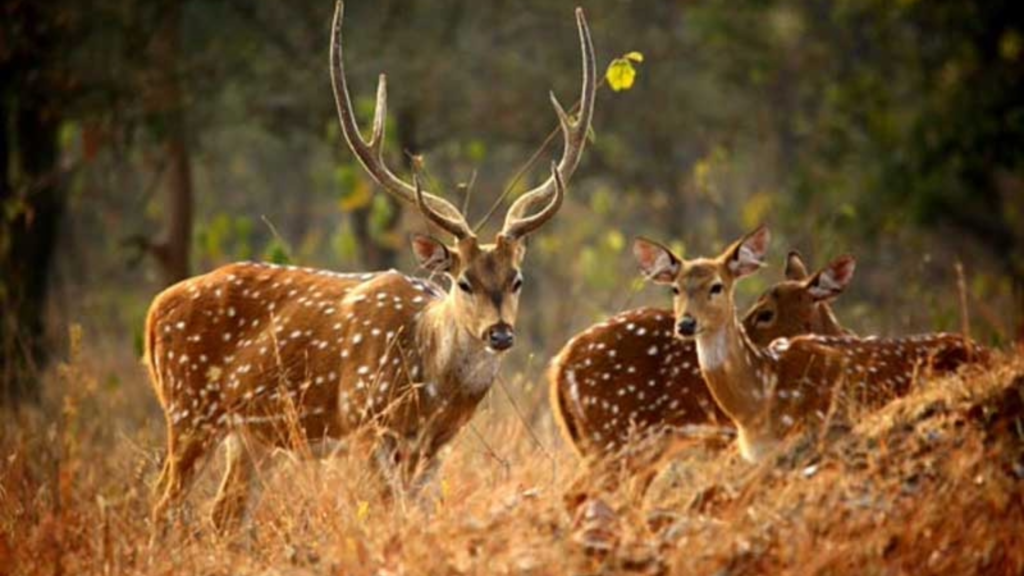
Visit Time: 6 am to 6 pm
Ticket Price: Rs. 50 for Indian visitors and Rs. 200 for foreigners
18. Agastyamuni Temple:
The Agastyamuni Temple in Rudraprayag is a revered Hindu temple dedicated to Sage Agastya, who is believed to be one of the seven great sages or Saptarishis. The temple is situated in the picturesque town of Agastyamuni, named after the sage, and is surrounded by the scenic beauty of the Himalayas. Devotees visit the temple to seek blessings and pay homage to Sage Agastya, who is revered for his wisdom and spiritual teachings. The temple’s serene ambiance and spiritual significance make it a popular destination for pilgrims and tourists alike.
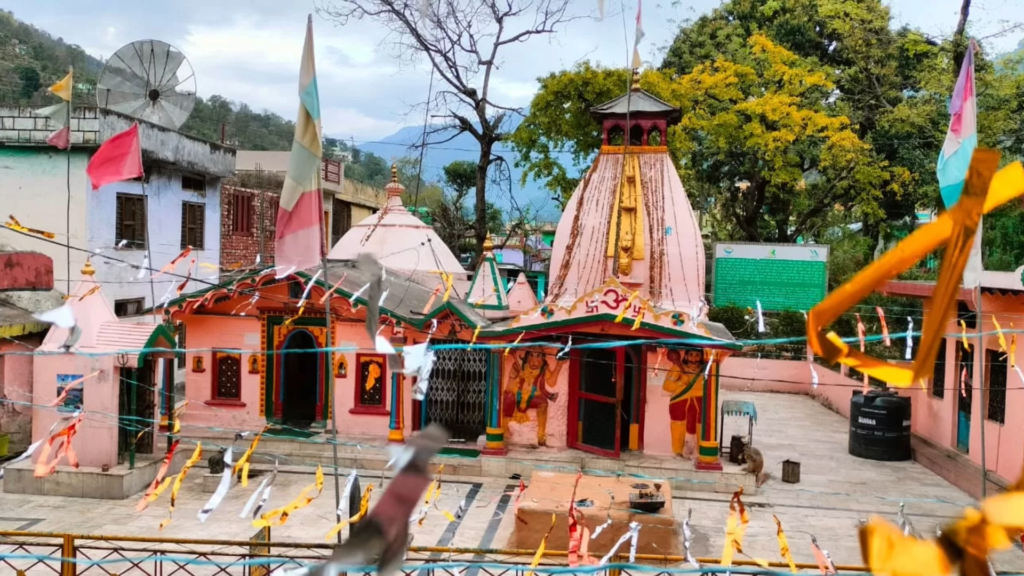
Visit Time: 6:00 AM to 7:00 PM
29. Sonprayag:
Sonprayag, a quaint village in Uttarakhand’s Rudraprayag district, holds immense religious significance. Nestled at the meeting point of the Basuki and Mandakini rivers, it is revered by Hindu pilgrims. Serving as the gateway to the Triyuginarayan Temple, where Lord Shiva and Goddess Parvati wed, and the Kedarnath Temple, a pivotal stop on the Char Dham Yatra, Sonprayag offers breathtaking views of snow-capped mountains and lush valleys.
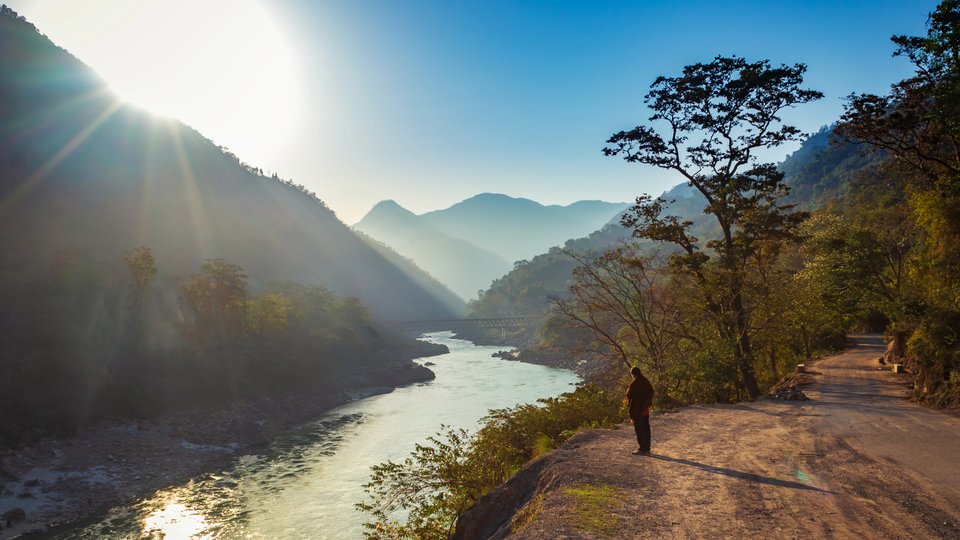
20. Khirsu:
Khirsu, a charming hill station in Pauri Garhwal district, sits at an elevation of 1760 meters, enveloped by towering mountains. Renowned for its natural splendor, Khirsu boasts snow-clad peaks, tranquil lakes, and verdant forests. The area is also home to the ancient Ghandiyal Devta temple, dedicated to a local deity. Khirsu is an offbeat destination near Rudraprayag, celebrated for the merging of the Alaknanda and Mandakini rivers and its profound religious importance.
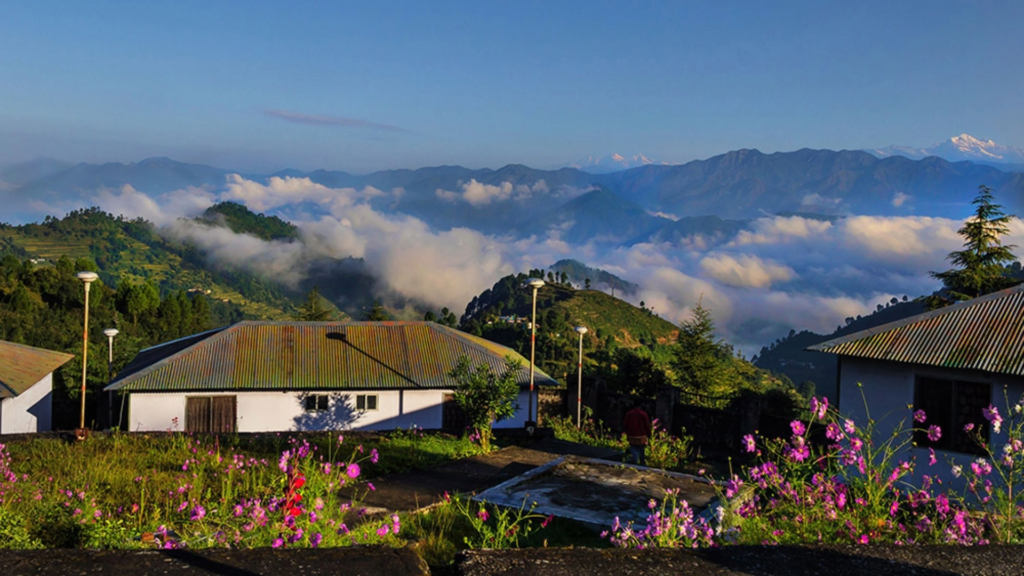
21. Jakholi:
Jakholi, nestled in the Rudraprayag district, is a serene and picturesque village. Surrounded by lush greenery and majestic mountains, Jakholi offers a tranquil retreat for nature lovers and travelers seeking solitude. The village is known for its breathtaking views of the Himalayas and the Alaknanda River, making it a perfect destination for those looking to immerse themselves in the natural beauty of the region.
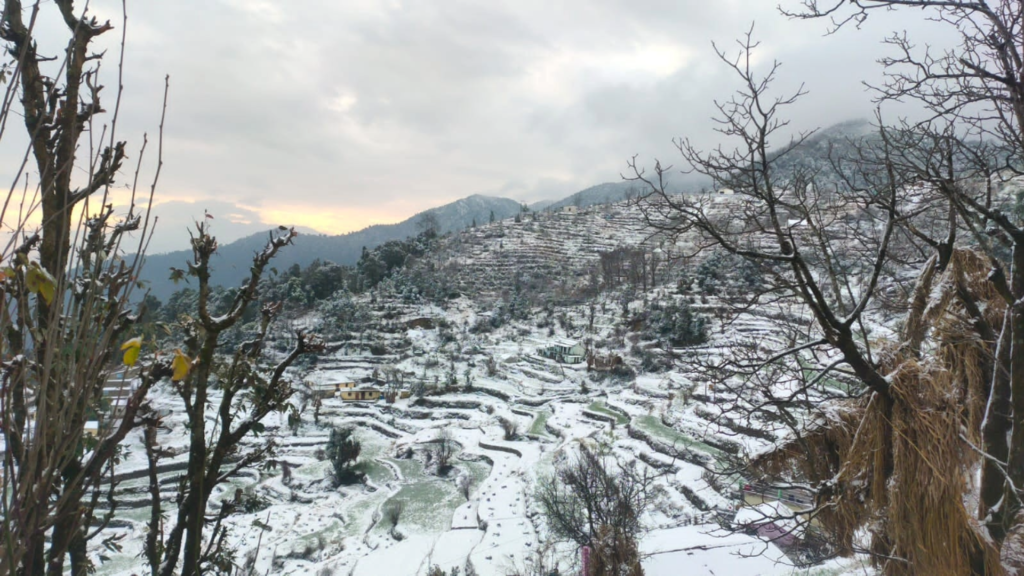
22. Guptakashi:
Guptakashi, located in the Rudraprayag district, is a sacred town known for its spiritual significance and natural beauty. Situated on the banks of the Mandakini River, Guptakashi is surrounded by lush green forests and offers stunning views of the snow-capped Himalayan peaks. The town is famous for the ancient Vishwanath Temple dedicated to Lord Shiva. Guptakashi serves as a gateway to the famous Kedarnath Temple and is an important stop for pilgrims undertaking the Char Dham Yatra.
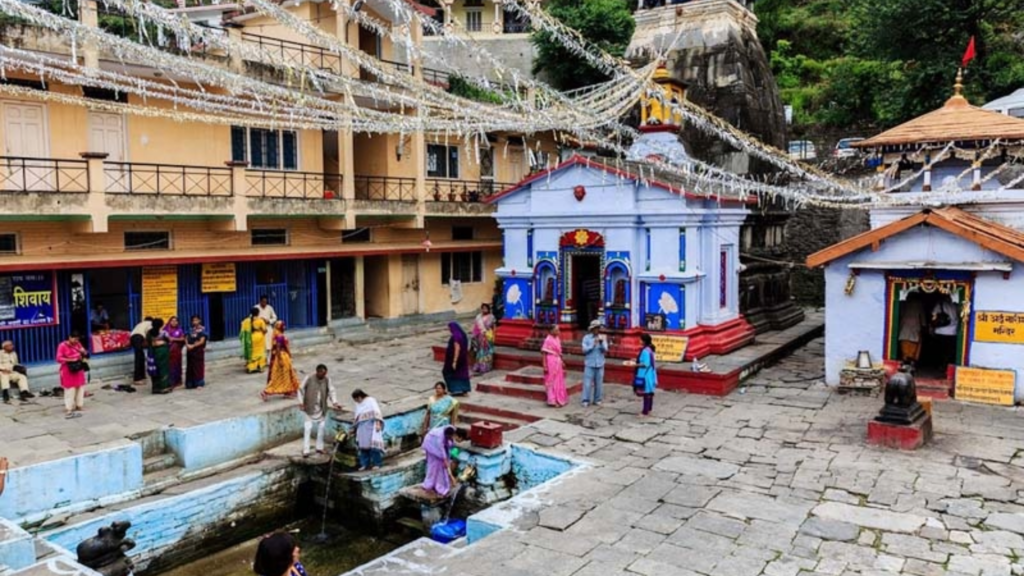
23. Tungnath Temple:
Tungnath temple, a Hindu temple in Rudraprayag district, is dedicated to Lord Shiva. It stands as the world’s highest Shiva temple and is part of the esteemed Panch Kedar temples. Perched on Chandranath Parvat at 3,680 meters (12,073 ft) above sea level, Tungnath is believed to have been constructed by the Pandavas to seek Shiva’s forgiveness post the Kurukshetra war. The temple houses a lingam, a statue of Ardhanarishvara, and various other idols. Accessed via a 4 km (2.5 mi) trek from Chopta, a base village, the journey offers stunning views of Himalayan peaks like Chaukhamba, Nanda Devi, and Kedarnath. The trek is moderately challenging and suitable for individuals with good physical fitness. Tungnath temple is open from May to October, offering pleasant weather and clear roads. During winter, the temple closes, and the Shiva idol is moved to Mukumath, a nearby village. The temple’s Maha Shivaratri festival attracts numerous devotees.
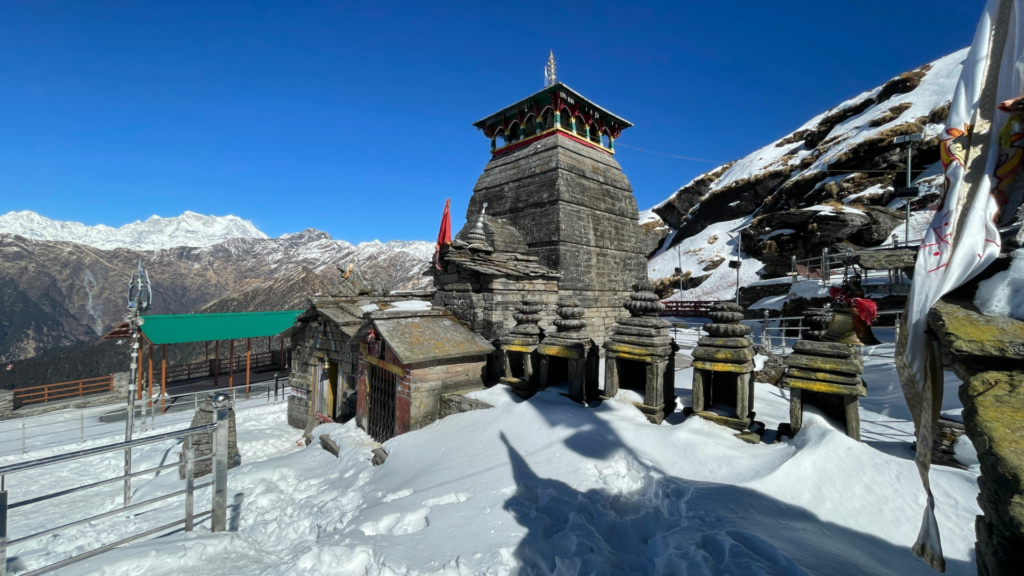
24. Chandrashila Trek:
The Chandrashila Trek is a sought-after route in the Garhwal Himalayas, commencing from Chopta and culminating at Chandrashila Peak, towering at 4,000 meters above sea level. This trek provides breathtaking vistas of Himalayan giants like Nanda Devi, Trishul, Chaukhamba, and Kedar Dome. En route lies the revered Tungnath temple, the world’s highest Shiva temple and a Panch Kedar site. Rated moderate to challenging, the trek typically spans 3 to 4 days. The optimal time to embark on this adventure is from September to November, offering pleasant weather and clear panoramas.
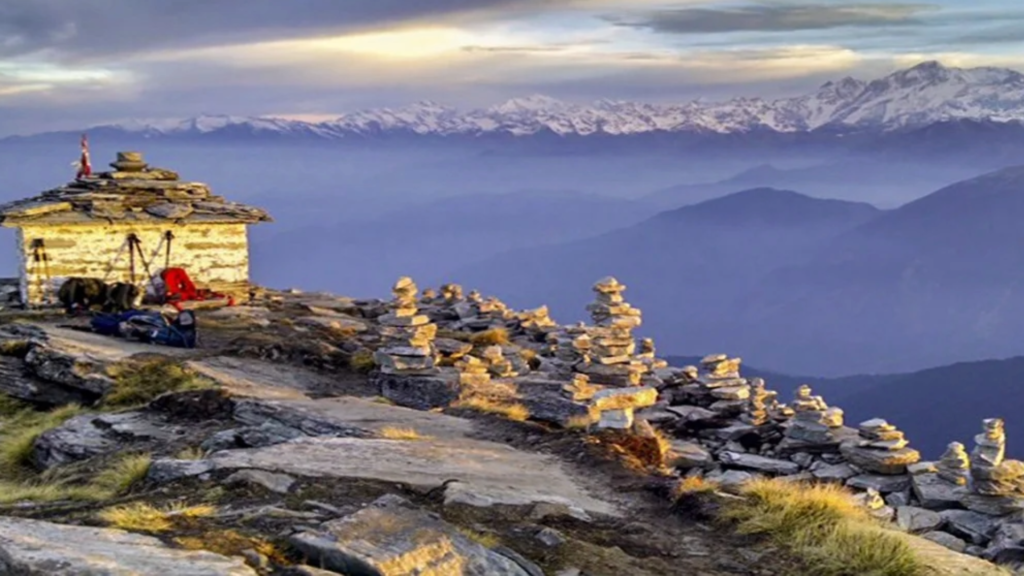
25. Indrasani Mansa Devi Temple:
The Indrasani Mansa Devi Temple, an ancient shrine honoring Mansa Devi, the Goddess of Serpents, stands near Kandali Patti Village in Rudraprayag district. This temple, believed to date back to Adi Shankaracharya’s era, is nestled amidst forests and other temples. Renowned for its alleged ability to cure snake bites through the goddess’s blessings, it draws numerous devotees of Mansa Devi and serves as a picturesque destination for tourists.
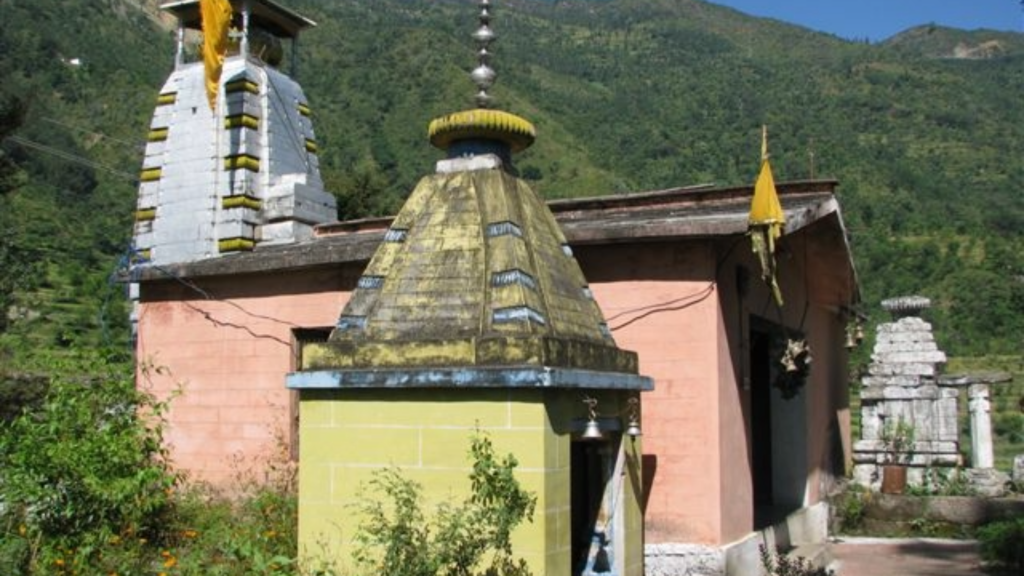
Visit Time: 6:00 AM to 7:00 PM
26. Dhari Devi Temple:
Dhari Devi Temple, a Hindu temple dedicated to Goddess Dhari, a form of Kali, is located on the banks of the Alaknanda River, between Srinagar and Rudraprayag. It is renowned for its unique idol, featuring the upper half of the goddess, while the lower half is worshipped at Kalimath. The idol is said to change its appearance with the time of day and season. The temple is also revered for its miraculous powers and is considered the protector of the Char Dham pilgrimage sites. it is accessible by bus or taxi from Srinagar or Rudraprayag. The nearest railway station is Rishikesh (119 km), and the closest airport is Jolly Grant (136 km). The temple is most vibrant during the Navratri festival, when it is adorned and special rituals are conducted.
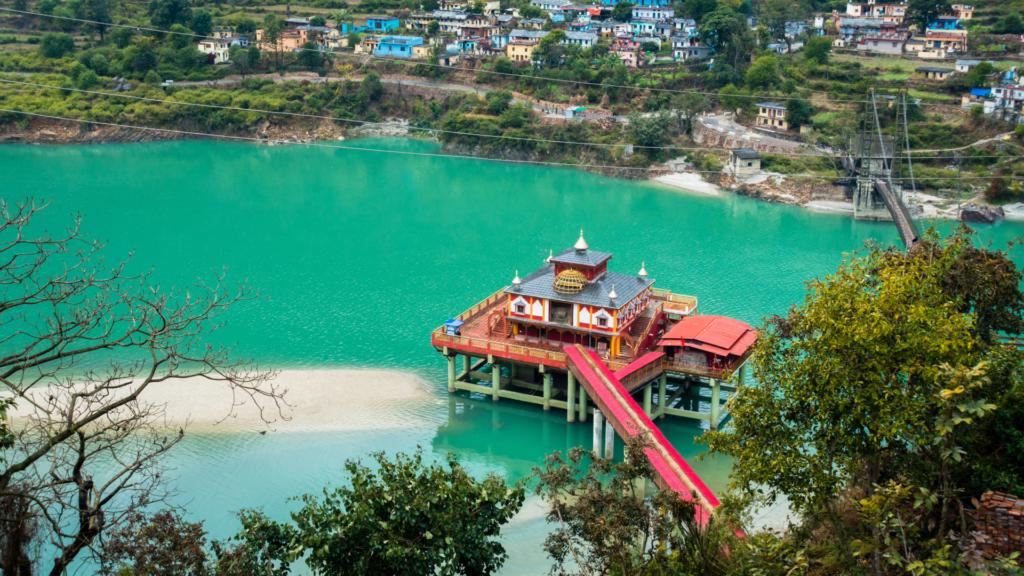
Visit Time: 6:00 AM to 8:00 PM
These were the best places to visit in Rudraprayag. Hope you liked it. Have a safe journey!
How To Reach Delhi To Rudraprayag:
- By Road:
- Distance: Approximately 380 kilometers (236 miles)
- Route: Delhi – Meerut – Haridwar – Rishikesh – Devprayag – Rudraprayag
- Time: It takes around 10-12 hours by car or bus, depending on traffic and road conditions.
- By Train:
- There is no direct train to Rudraprayag. You can take a train from Delhi to Haridwar or Rishikesh and then travel by road to Rudraprayag.
Here Are Some Trains From Delhi To Rishikesh Railway Station.
| Train Name | Train Number | Departure Station | Departure Time | Arrival Station | Arrival Time | Fare |
|---|---|---|---|---|---|---|
| DDN SHTBDI EXP | 12017 | New Delhi | 06:45 AM | Haridwar | 11:25 AM | Rs. 685 |
| DDN JANSHTBDI | 12055 | New Delhi | 03:20 PM | Haridwar | 07:33 PM | Rs. 325 |
| YOGA EXPRESS | 19031 | Delhi | 09:10 PM | Haridwar | 04:20 AM | Rs. 200 |
| MUSSOORIE EXP | 14041 | Delhi | 10:25 PM | Raiwala | 07:03 AM | Rs. 185 |
| SIDDHABALI J SH | 12038 | New Delhi | 02:35 PM | Raiwala | 07:58 PM | Rs. 325 |
- By Air and Road:
- Nearest Airport: Jolly Grant Airport in Dehradun (about 159 kilometers or 99 miles from Rudraprayag)
- From the airport, you can hire a taxi or take a bus to Rudraprayag.
- By Bus:
- There are direct buses from Delhi to Rudraprayag, but they are not very frequent. It’s more common to take a bus to Rishikesh or Haridwar and then change to a bus heading to Rudraprayag.
- Private Taxis/Cabs:
- You can also hire a private taxi or cab from Delhi to Rudraprayag, which offers a more comfortable and flexible travel option.
- Book A Cab: you can book a cab from our website along with a customized itinerary, or can hire just a cab for your next trip. So just do hurry. Call Us On: +911223577273
Nearby Places To Visit At Rudraprayag
| City | Distance from Rudraprayag | Places to visit |
|---|---|---|
| Srinagar | 34 km | Hemkund Sahib, Kilkileshwar Mahadev Temple, Dhari Devi Temple |
| Pauri | 61 km | Khirsu, Chaukhamba Viewpoint, Kandolia Temple |
| Devaprayag | 68 km | Raghunathji Temple, Chandrabadani Temple, Dashrathshila |
| Tehri | 87 km | Tehri Dam, Surkanda Devi Temple, Dhanaulti |
| Kedarnath | 89 km | Kedarnath Temple, Vasuki Tal, Gandhi Sarovar |
Best Visit Time In Rudraprayag
The prime period to explore Rudraprayag spans from March to November, offering pleasant weather and excellent visibility. Here, you can relish the breathtaking Himalayan panoramas, witness the merging of the Alaknanda and Mandakini rivers, and partake in a plethora of trekking and adventure ventures.



